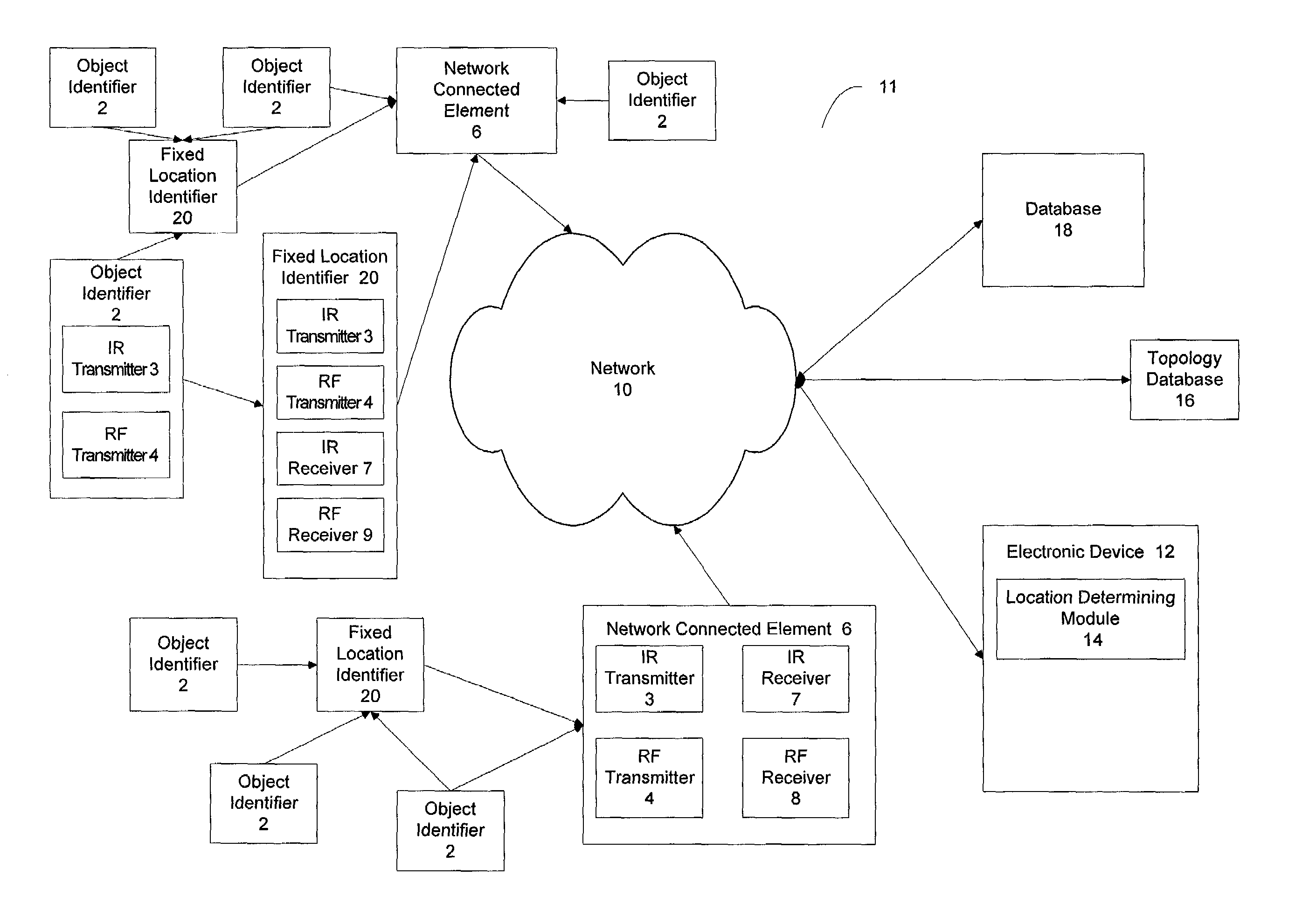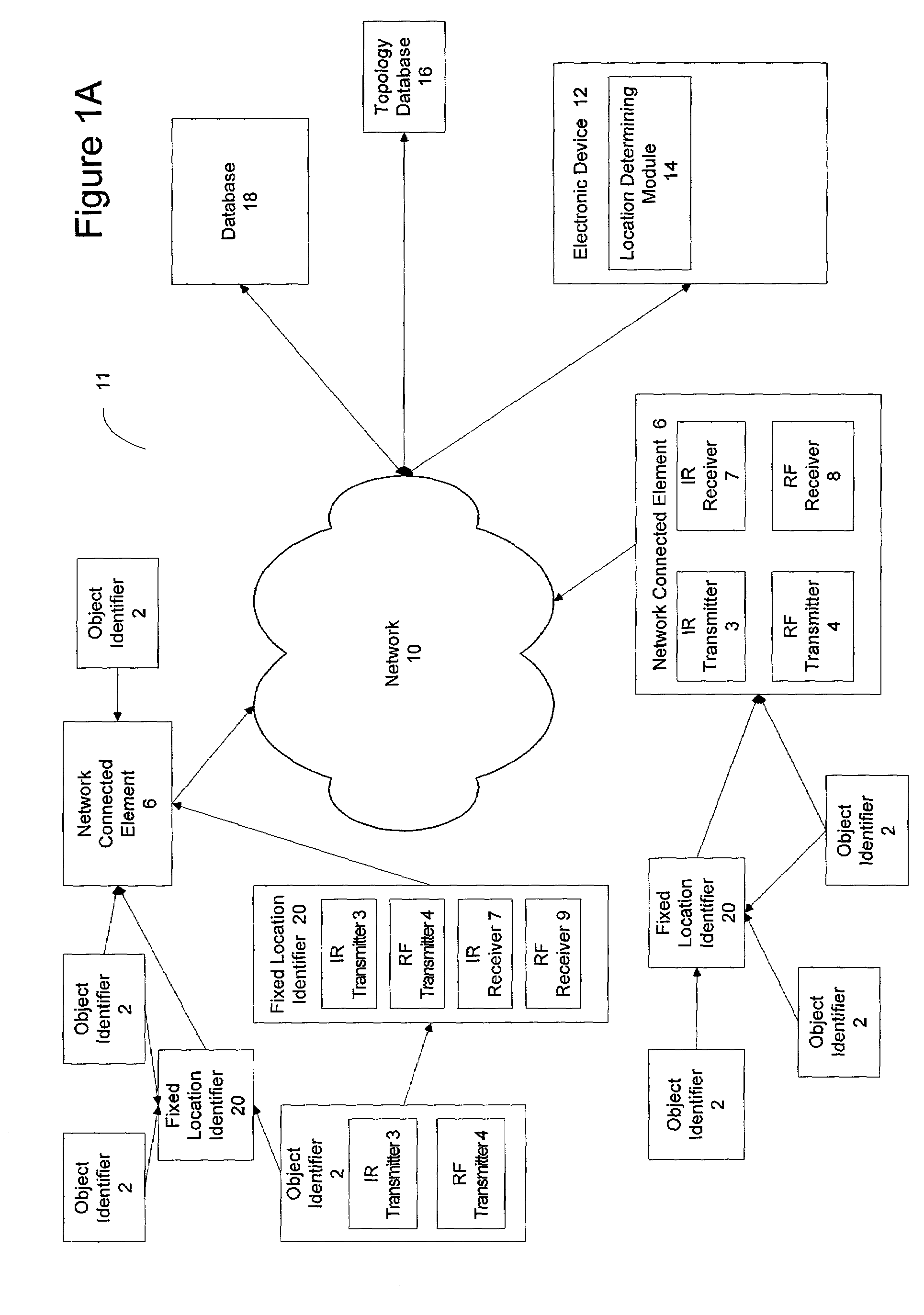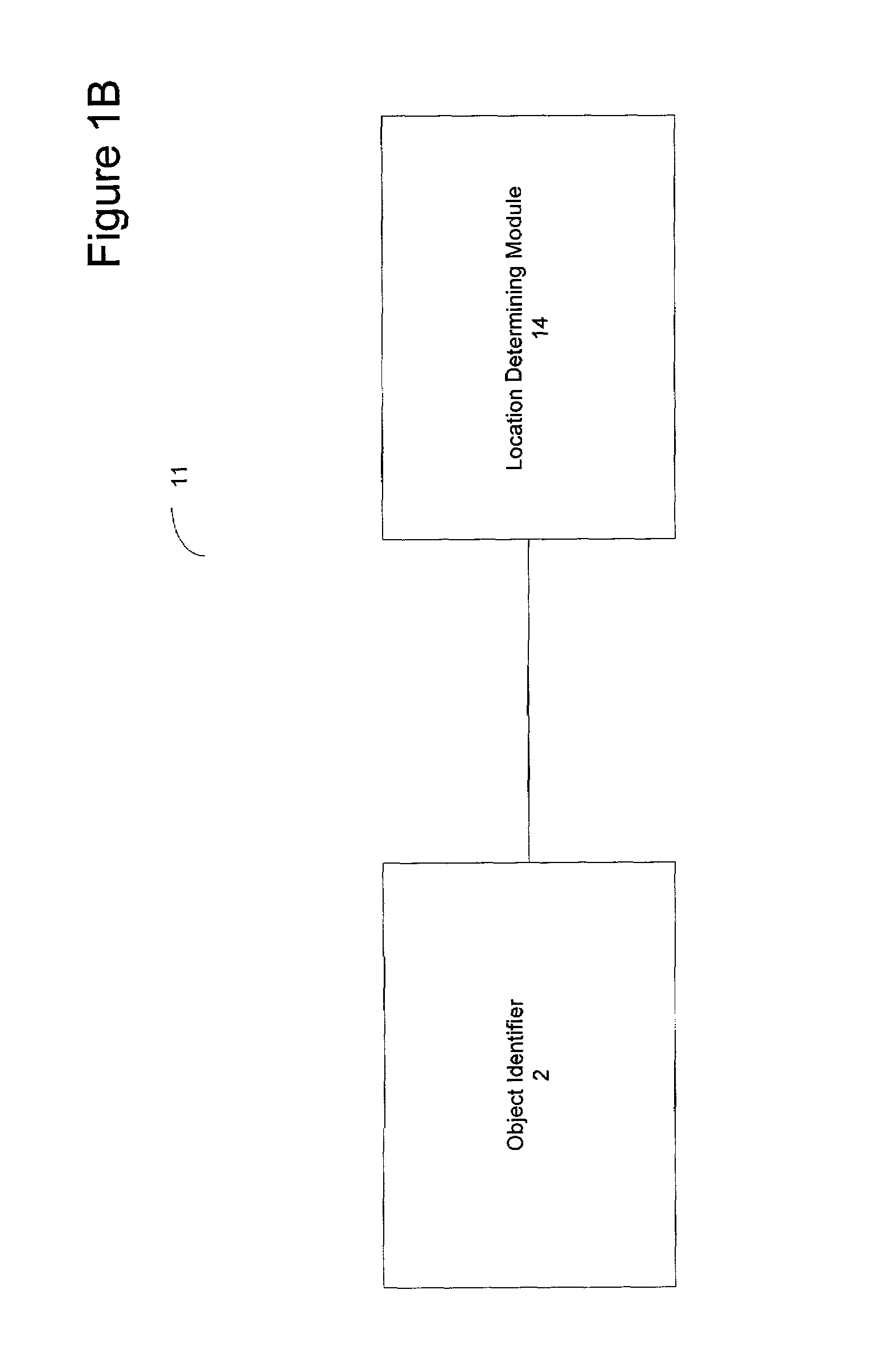System and method for performing object association using a location tracking system
a technology of location tracking and object association, applied in the field of location tracking system, can solve the problems of human need to initiate conventional object association system, process becomes very burdensome for medical staff, and the accuracy of today's object association system is inadequate,
- Summary
- Abstract
- Description
- Claims
- Application Information
AI Technical Summary
Problems solved by technology
Method used
Image
Examples
Embodiment Construction
[0017]The illustrative embodiment of the present invention provides a method of recording object associations using a location system. Object locations are determined based on signals generated from object identifiers linked to the objects and forwarded to an electronic device interfaced with a network. The origin of the signal is calculated based on the known position of the receivers receiving the signal, the historical recorded position of the object, the characteristics of the receivers receiving the signal (i.e. the range), the strength of the received signal, the type of signal, and whether or not the signal was repeated. The location is determined by software (the location determining module) either running on, or interfaced with, the electronic device. Once the location of the object has been determined, the location determining module consults a database to determine associations between the located object and other objects or specified locations based on the other objects ...
PUM
 Login to View More
Login to View More Abstract
Description
Claims
Application Information
 Login to View More
Login to View More - R&D
- Intellectual Property
- Life Sciences
- Materials
- Tech Scout
- Unparalleled Data Quality
- Higher Quality Content
- 60% Fewer Hallucinations
Browse by: Latest US Patents, China's latest patents, Technical Efficacy Thesaurus, Application Domain, Technology Topic, Popular Technical Reports.
© 2025 PatSnap. All rights reserved.Legal|Privacy policy|Modern Slavery Act Transparency Statement|Sitemap|About US| Contact US: help@patsnap.com



